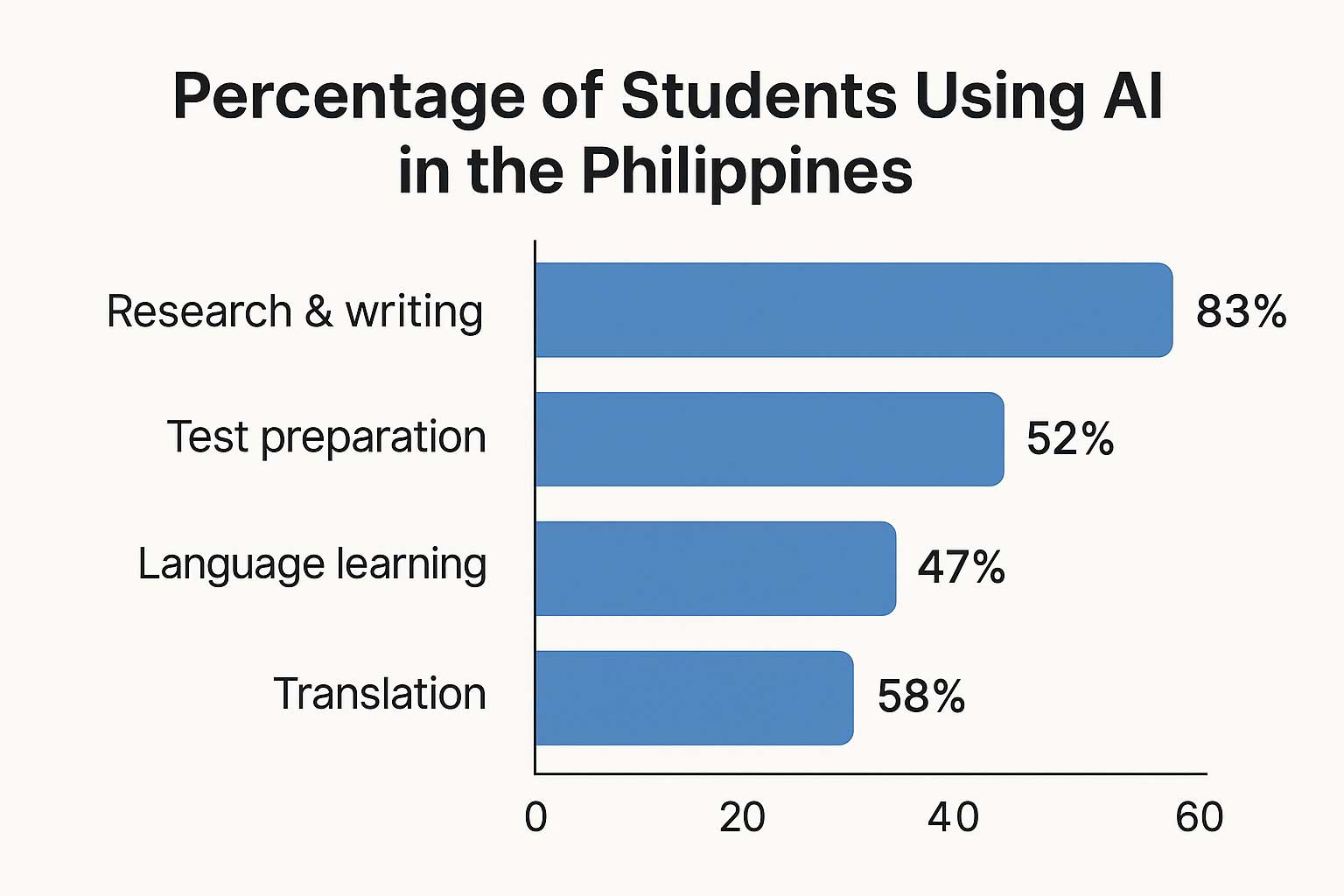Percentage of Students Using AI in the Philippines
Updated on October 16, 2025 • by PinoyGPT Editorial
- Filipino students most often use AI for research & writing (83%), test prep (52%), and language learning (47%).
- Newer 2025 data shows strong adoption across specific tasks like text generation (63%) and translation (58%).
- Policies are mixed: some schools encourage guided use, while ~38% of vocational institutions reported banning AI entirely.

The Philippines is seeing rapid, practical uptake of AI in classrooms. Multiple education surveys show that college students frequently use generative AI for research, writing, and test preparation—often to save time, draft text, translate, and clarify concepts. Below is a clear summary of how Philippine students are using AI today, where the numbers come from, and what it means for educators, parents, and learners.
How Filipino Students Use AI (What the Numbers Mean)
Instructure’s education surveys consistently show strong task-based adoption. Students primarily use AI for research & writing (83%), test preparation (52%), and language learning (47%). Newer 2025 findings also highlight common activities like text generation (63%), translation (58%), writing enhancement (62%), explaining concepts (55%), and summarizing articles (52%).
Benefits and Use Cases
- Faster drafting & research: Brainstorm topics, find sources, outline essays, and improve clarity.
- Smarter test prep: Generate practice questions, get explanations, and summarize review materials.
- Language learning help: Translate passages, check grammar/tone, and practice conversational prompts.
- Concept mastery: Ask follow-ups until complex ideas “click.”
Policies & Barriers
Policy is still catching up. Some institutions publish guidelines and encourage responsible use; others remain cautious. In surveys of Philippine vocational institutions, about 38% reported banning AI entirely, while others permit use with conditions. Infrastructure and access gaps can also limit consistent adoption across campuses.
Why It Matters (Philippines)
Used well, AI can boost reading/writing fluency, accelerate feedback loops, and personalize practice. For educators, the opportunity is to teach how to use AI—citing sources, checking accuracy, and turning drafts into critical, original work—rather than simply allowing or blocking tools.
Quick Facts
- Most-used tasks: Research & writing (83%), test prep (52%), language learning (47%).
- 2025 task usage: Text generation (63%), translation (58%), writing enhancement (62%), concepts (55%), summaries (52%).
- Policy snapshot: ~38% of PH vocational institutions reported banning AI tools.
- Student sentiment: Many say AI saves time and helps clarify difficult topics.
Responsible Use: Practical Tips for Students
- Start with your own outline. Use AI to expand or clarify, not to replace your thinking.
- Verify facts & cite sources. Ask AI for citations, then open and check them.
- Refine your drafts. Use AI for grammar/tone, but keep your voice and analysis.
- Know your school’s policy. Follow course-level rules on AI assistance.
- Build skills, not shortcuts. Treat AI as a coach—practice retrieval and problem-solving yourself.
Related reading: ILOVEYOU: The first PH-originating global computer worm
